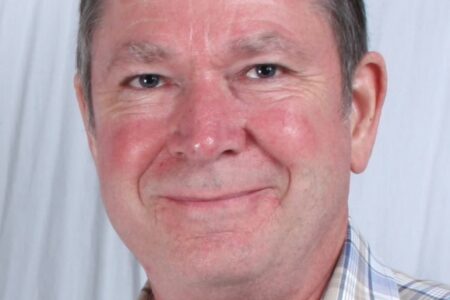ANALYSIS: Economist Aaron Cosbey finds SD20 options for Rossland result in financial losses for SD20, not savings
Many arguments have countered claims made in School District No. 20’s (SD20) recent facilities report that recommends closing MacLean and reducing RSS to a K-9 facility, but we feel the most cogent is Aaron Cosbey’s analysis, summarized here and attached below.
Another document that succinctly reviews the errors, omissions, and pitfalls of the SD20 report is the Neighbourhood of Learning’s (NOL) online summary.
Although the deadline for written public submissions to SD20’s facilities process ended on Jan. 4, the board will hold a public meeting in the RSS gym on Tuesday, Jan. 15 at 6:30 p.m. Broad public participation is encouraged by SD20’s board and NOL.
Cosbey’s report acknowledges the reality of SD20’s financial crunch, namely the “bleak picture” of reduced funding on the order of $1.5 million in the coming three years.
“Clearly the status quo won’t work,” he writes. “So it’s important to get the figures right in the three scenarios that are being considered.” They are: 1) Close MacLean, K-12 at RSS, 2) Close MacLean, K-9 at RSS, and 3) Close RSS, K-7 at MacLean.
Mistaken Assumptions
In the RSS K-9 and MacLean K-7 options, Cosbey claims it is a mistake to assume all students currently enrolled in RSS would go to J.L. Crowe in Trail.
“We all know this is a mistake, but we just don’t know exactly how big a mistake,” he writes. Attrition from SD20 would happen if students moved out of the district, were homeschooled, or went to an independent Rossland-based school—the route Cosbey says his family would “certainly” choose, although they would prefer a public option in Rossland.
In the recent Rossland Schools Survey, if RSS were closed, some 45 per cent said they’d consider moving from Rossland and 90 per cent said they would consider sending their children to an independent Rossland-based school.
Cosbey commented, “Some people may be voting strategically, and others may sincerely believe they’ll behave in ways that they won’t when the time actually comes. But it would be foolish, bordering on negligent, to make forecasts that assume that the true numbers are actually zero.”
New analysis considers financial impact of attrition for SD20
Consequently, Cosbey ran scenarios using three levels of attrition—10, 20, and 40 per cent—on top of the three scenarios and demographic trends suggested by SD20. The spreadsheet he used is available online.
His results turn SD20’s conclusions upside down.
“What is the impact on the district’s budget of losing those students?” he asked. His figures, reported precisely in his report, range from a loss in 2013-2014 of $136,000 with 10 per cent attrition and RSS K-9, to a loss of $773,000 with 40 per cent attrition and MacLean K-7, versus the RSS K-12 option.
These losses increase with the projected population increase in Rossland, from $209,000 to $1,169,000 in 2026-2027, without adjusting for inflation.
Financial losses likely exceed potential savings
Cosbey balances these losses against the savings SD20 expects as a consequence of school closures.
“Only in the close RSS scenario [MacLean K-7], by assuming the minimum 10 per cent attrition, are there any savings at all on a net accounting basis: $86,470. But even that is only temporary…within 10 years even that net savings is wiped out, assuming the 10 per cent figure is constant.”
Cosbey thinks attrition would actually rise over time as an independent school becomes better established. In the absence of an independent school, homeschool groups would also have become better established in that time.
The SD20 report clearly favours RSS K-9 and points out a number of problems with the MacLean K-7 option, not least that the school is already bursting at the seams with K-5.
In Cosbey’s analysis, however, RSS K-9 results in neither gains nor savings in a 10 per cent attrition model. In the 20 and 40 per cent attrition models, losses range from about $80,000 to nearly $300,000 in the 2013-2014 school year.
Other revenues ignored
Both Cosbey’s and SD20’s models ignore revenue enhancement, Cosbey notes.
Currently, of eight international students in the district, five have chosen to go to RSS. “Evidently, they did not see RSS and other schools in the district as interchangeable,” Cosbey writes.
In addition, RSS also hosts seven international Academy students—there are none in any other district school—”whose fees again feed straight into SD20 revenues,” he writes.
Eight students in the district program “pitifully underperforms” the potential, he argues. “SD20 with RSS K-12 could attract 40 international students—a reasonable assumption by the experience of other similarly endowed districts.”
If, by present numbers, one assumes that 60 per cent of those 40 students would choose to go to another district if RSS were not available—for example to Golden, Revelstoke, Nelson, Kimberley, or Canmore—Cosbey calculates a loss of $216,000 per year in potential international student revenue to the district.
Cosbey’s detailed analysis of how best to attract and support foreign students in Rossland is beyond our scope here, but these are his main points: “First, it can’t be fully realized without an investment of dedicated resources,” he writes, “and second, it can’t be fully realized without Grades 8-12 at RSS.”
About Aaron Cosbey
Aaron Cosbey is a Rossland resident and an environmental economist specializing in the areas of trade and sustainable development, international environmental governance, and climate change.
























